Are you a power email sender? Campaign Monitor might be too costly for you. Fortunately, there are a lot of free and paid alternatives you can choose from.
Digital marketing agencies love Campaign Monitor for a range of unique features, like private labeling, granular user permissions, and others. For a small business, these advantages don’t add any value – so why pay for them?
Nevertheless, there are reasons why email marketers choose Campaign Monitor. Let’s start with taking a look at the best features of the product and then see how it compares to competitors’ offerings.
Why email marketers choose Campaign Monitor
Campaign Monitor is a straightforward email marketing solution with a user-friendly interface and simple features. Users always highlight the following pros of the tool:
- A rich collection of mobile-responsive email templates
- A range of features for agencies: a client dashboard, multi-user access, private labeling, granular user permissions, special agency discounts, etc.
- An easy-to-use drag and drop builder for emails
- Countdown Timer (available for higher plans)
- Granular view of audience segments and individual contacts
- Automated journeys are available inside all plans
- Robust API for custom integrations
- Good email deliverability
- Real-time campaign insights
- Transactional emails
Drawbacks of using Campaign Monitor
And why is it worth considering Campaign Monitor alternatives?
- It’s difficult to customize templates – you can’t access the HTML email editor if you choose pre-built templates;
- There’s no free plan inside Campaign Monitor;
- It lacks multichannel marketing functionality, like SMS marketing, Facebook advertising, etc.;
- The toolkit doesn’t include a landing page builder;
- Users need to pay more as their contact list grows;
- No automation workflow templates;
- No lead scoring functionality.
Campaign Monitor pricing
How much does Campaign Monitor cost?
Campaign Monitor starts at $11/month. The package includes 500 contacts and 2,500 emails/month. For additional 2,000 contacts and 10,000 emails within the same plan, you’ll pay around $40/month.
Interestingly, there’s no significant gap in the functionality of the Lite, Essnetials, and Premier plans. Users can set up automated workflows, run A/B tests, segment contacts, and send transactional emails in all plans.
New users can try Campaign Monitor for free for as long as they want until they add more than 5 contacts to their email list.
7 Top Alternatives to Campaign Monitor
Looking for a cheaper alternative to Campaign Monitor? These are the best ones to choose from.
1. Brevo

Need a tool with multichannel marketing functionality? Meet Brevo, a marketing automation platform for email marketing service, transactional email sending, sales, SMS marketing, and Facebook advertising.
Brevo or Campaign Monitor?
Here’s why Brevo is one of the best alternatives to Campaign Monitor.
Free plans
Not sure you’re ready to invest in a paid plan? You can use Brevo for free forever.
While Campaign Monitor doesn’t offer any free plan, Brevo lets you send up to 300 emails/day without paying a cent.
Pricing packages
Brevo’s paid plans start at $9/month for 500 contact credits and up to 5,000 emails per month. To send that many emails with Campaign Monitor, you’ll need to pay around $20/month.
Lead scoring
Campaign Monitor doesn’t have functionality for lead scoring while Brevo does. The platform lets you set up a lead scoring model that automatically assigns scores to contacts based on predefined criteria.
Landing pages
Mind that you can’t create landing pages with Campaign Monitor. If you need a solution for lead generation, you’ll also need to invest in a landing page builder and integrate it with Campaign Monitor… or use Brevo.
Multichannel marketing
Campaign Monitor doesn’t offer any functionality for multichannel marketing. Meanwhile, Brevo lets you combine email and SMS communication effortlessly.
And what if you want to reinforce your email marketing campaigns with Facebook retargeting ads? You can do it without leaving the Brevo interface.
Sales Platform
Brevo also offer a Sales Platform. Track and manage sales pipelines, set up meetings with prospects directly and keep your team on the same page all from one place.
Automation workflows
Similar to Campaign Monitor, Brevo offers automation workflows in all plans. To save your time, we’ve also created ready-to-use workflow templates that you can apply for common scenarios.
Transactional emails
Finally, both platforms allow you to send transactional emails with high deliverability rates. While many email marketing platforms include transactional email sending in more expensive plans, Brevo SMTP and Email API are available for both free and paid users.
2. ActiveCampaign
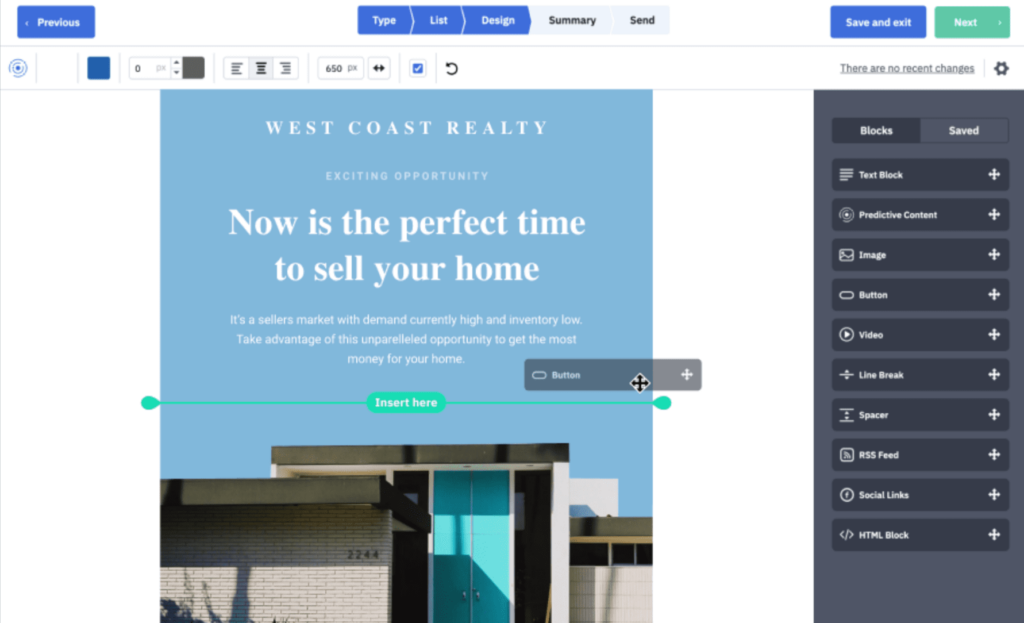
ActiveCampaign is probably the closest Campaign Monitor competitor. If you look at the pricing models, the platforms are almost identical but for a few critical features.
Related: ActiveCampaign Competitors
ActiveCampaign or Campaign Monitor?
- Pricing packages: ActiveCampaign starts at $15/month for up to 500 contacts.
- Free access: Neither platform offers a free plan.
- Lead scoring: As with the Brevo software, ActiveCampaign allows for automated lead scoring. You won’t find this feature inside Campaign Monitor.
- Site tracking: If you want to connect your email marketing software to your website activity, you’d better choose ActiveCampaign.
- A/B testing: For users willing to test their email newsletters, ActiveCampaign might be too pricey – A/B testing isn’t included in lower tiers. Campaign Monitor, however, offers A/B testing as a part of all plans.
- Mobile app: ActiveCampaign is one of the few brands offering a mobile app for managing email campaigns and contacts on the fly.
- SMS marketing: ActiveCampaign is good for email marketers looking for SMS marketing and other multichannel marketing features.
- CRM: ActiveCampaign offers tools for CRM and sales automation, and Campaign Monitor doesn’t.
3. Moosend
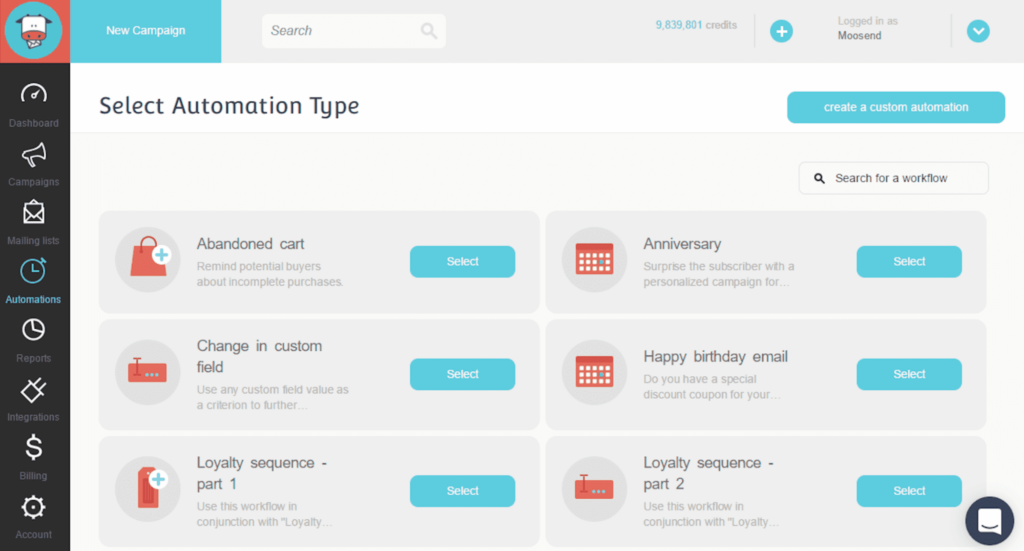
Moosend is an email marketing platform with a couple of exclusive features. It’s particularly good for ecommerce brands.
Moosend or Campaign Monitor?
- Pricing packages: For $9/month, you can add up to 500 contacts to your Moosend account. In contrast to Campaign Monitor, the cheapest Moosend plan goes with unlimited email sending.
- Free access: Moosend doesn’t have a free plan but provides a 30-day free trial.
- Landing pages: With Moosend, you can create responsive landing pages starting at $9/month.
- Shoppable emails: Moosend displays buyable products within emails and helps to craft catchy email annotations for Gmail Promotions Tab.
- Ecommerce product recommendations: Moosend offers personalized product recommendations as a part of their ecommerce toolkit. The product lets you set triggers for cross-selling emails and refill notifications.
- Subject line tester: The tool can estimate your email open rates based on your subject lines.
- Countdown timers: While Campaign Monitor includes Countdown Timers only in top-tier plans, Moosend makes the feature available for all users.
4. HubSpot
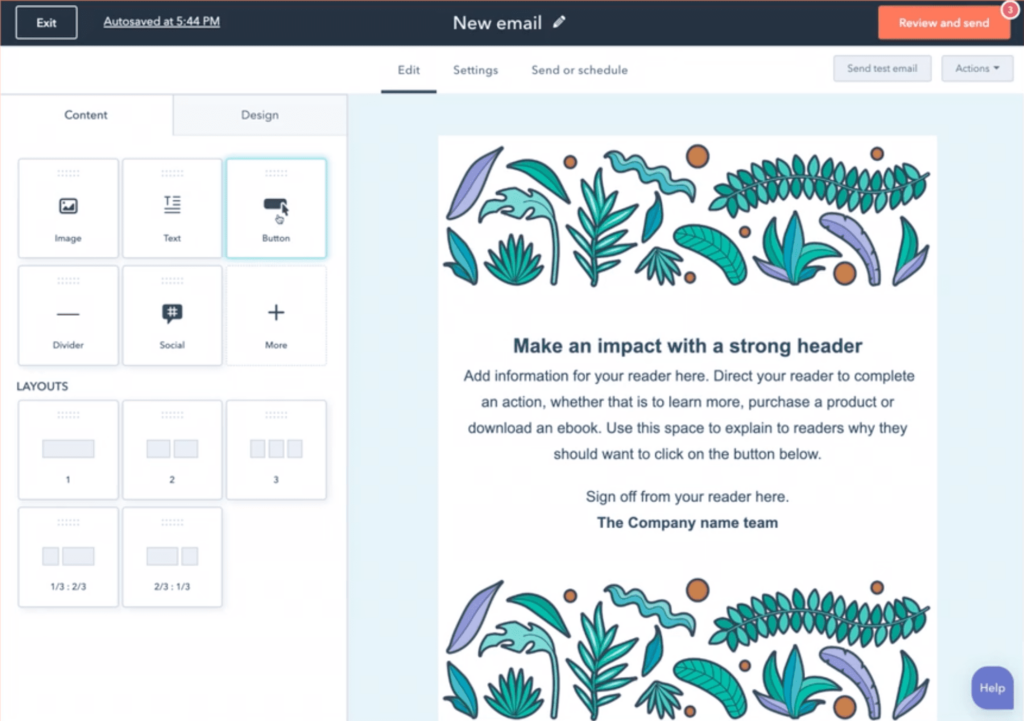
HubSpot is a great alternative to Campaign Monitor if you use its free tools. Advanced tools start at $49/month, which hardly makes sense for a small business.
HubSpot or Campaign Monitor?
- Free access: HubSpot offers a nice collection of free tools, including a drag and drop email builder, basic CRM functionality, list segmentation, landing pages, and live chat.
- Pricing packages: We’ve already mentioned HubSpot’s paid plans start at $45/month for only 1,000 contacts, which is way more expensive than Campaign Monitor’s pricing.
- Marketing automation tools: HubSpot users don’t have access to automation features inside free plans. To use automated workflows, it’s better to choose Campaign Monitor.
- Mobile app: All HubSpot users can access a mobile app and accomplish all the tasks they would typically do with the desktop version.
- A/B testing: Advanced features, like A/B testing, are only available starting from HubSpot’s Professional plan ($800/month).
- Customer support: HubSpot is famous for its world-class customer support team.
5. Omnisend
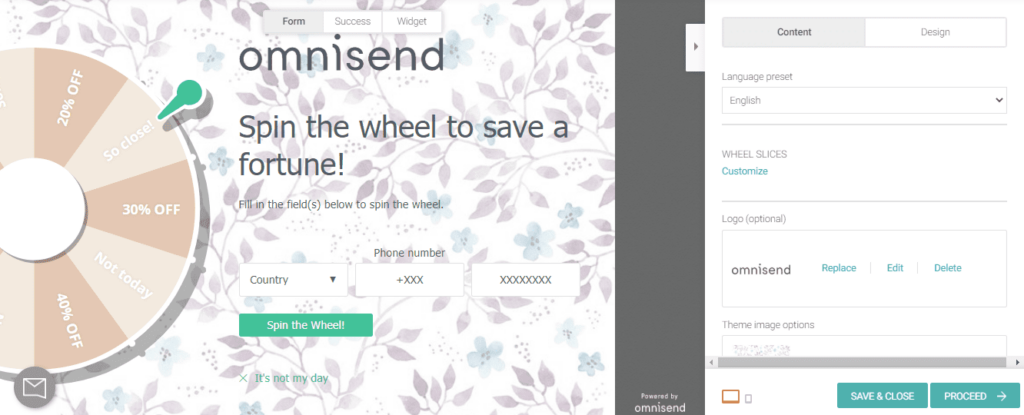
Omnisend is an email and SMS marketing platform focusing on ecommerce automation.
Omnisend or Campaign Monitor?
- Free access: Omnisend includes up to 250 contacts and 500 emails/month in a forever-free plan.
- Pricing packages: The cheapest paid plan costs $16/month and includes up to 500 contacts, 6,000 emails, and max. 60 SMS notifications per month. You can also add extra credits to the most basic plan or upgrade to the higher tier package ($59/month) for additional features.
- Email automation software: Omnisend users can create both pre-built and custom automated email workflows.
- Ecommerce: Ecommerce-specific features, like personalized recommendations, pre-built ecommerce workflows, dynamic content, and auto-generated discount codes are available inside Omnisend.
- Exclusive features: Omnisend offers a range of exclusive features to increase conversions of your signup forms, pop-ups, and email content. Users can add Wheel of Fortune, scratch cards, interactive Gift Box, and other elements to gamify their campaigns.
- Landing pages: There’s a built-in landing page building tool for your lead generation campaigns.
- SMS marketing: SMS sending is also a part of Omnisend’s features in all plans.
6. AWeber
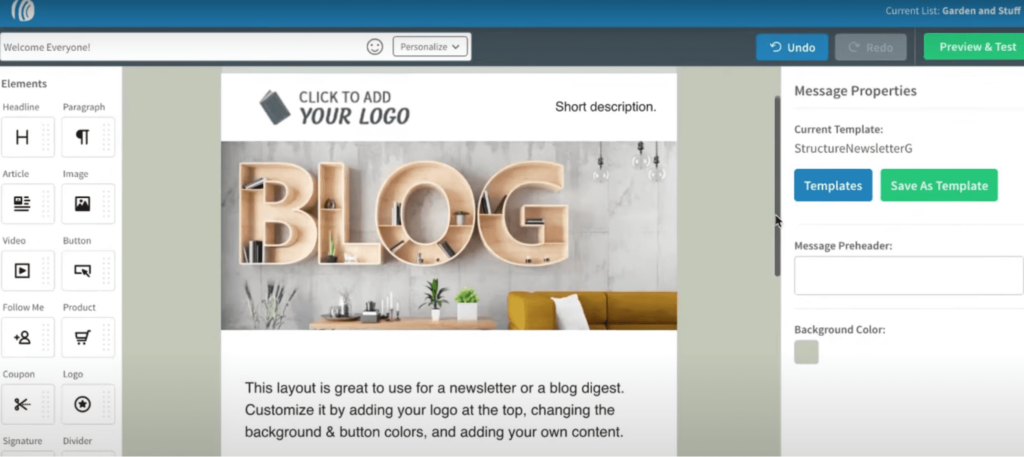
Aweber is an email marketing tool for small ecommerce brands. It’s good for setting up simple and inexpensive campaigns.
Aweber or Campaign Monitor?
- Free access: If you don’t exceed the limit of 500 contacts, you can use Aweber for free.
- Pricing packages: Aweber starts at $16.15/month – almost twice as much as the cost of Campaign Monitor’s cheapest plan. However, when your mailing list grows, Aweber becomes a more affordable option.
- Transaction fee: Mind that Aweber charges a 2.9%+$0.3 fee (+1,0% or 0.6% depending on the plan) per transaction if you run sales campaigns.
- Multi-user access: Both Aweber and Campaign Monitor offer access for an unlimited number of users in all plans.
- Ecommerce: Aweber users can set up recurring payments, send autoresponders, and track sales.
- Landing pages: A drag and drop editor for landing pages is included in free and paid Aweber plans.
- Integrations: Aweber and Campaign Monitor integrate with a range of ecommerce platforms, like Shopify and WooCommerce, but only Aweber has direct integration with PayPal.
7. Constant Contact
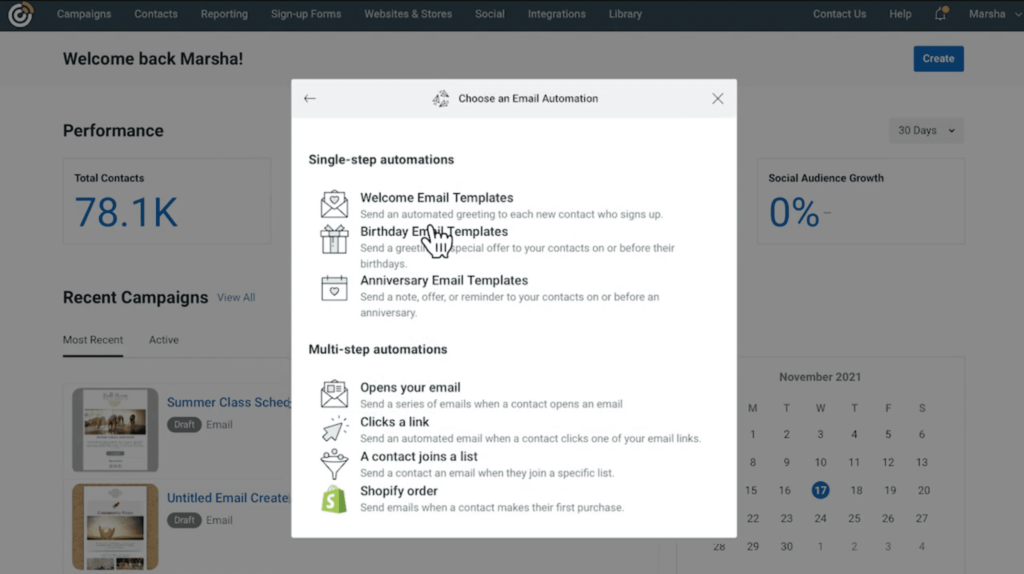
Finally, meet Constant Contact. The platform provides all the necessary tools for generating leads, nurturing them, and collecting their feedback.
Constant Contact or Campaign Monitor?
- Free access: Neither Constant Contact nor Campaign Monitor has a free plan.
- Pricing packages: Constant Contact’s Core plan begins at $9.99/month. For mid-sized businesses and enterprises, Constant Contact offers a full email marketing suite starting at $45/month for 500 contacts. Overall, Constant Contact is more expensive than Campaign Monitor.
- Landing pages: It only makes sense to switch from Campaign Monitor to Constant Contact if you need to create lead generation landing pages. The feature is included in all plans.
- Mobile app: It’s possible to manage campaigns through Constant Contact’s mobile app.
- Collect feedback: Constant Contact allows users to collect feedback through embedded polls and surveys.
- Multichannel marketing: Users can post to social media platforms and design Facebook and Instagram ads directly inside the Constant Contact interface.
Discover more Constant Contact alternatives.
Which Campaign Monitor alternative is right for you?
These are the closest Campaign Monitor competitors. To choose the right tool, spend some time taking advantage of free plans and free trials.
A lot of options get more expensive as you grow. Think of how your email marketing strategy will look in 6 months or a year and pick a tool that supports your business growth.






